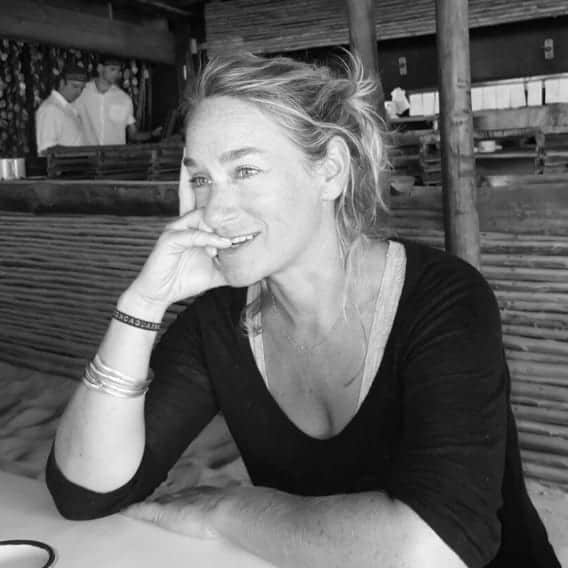
John D Grove is a highly qualified and experienced licensed clinical social worker, specializing in Human Development and Mental Health Clinical Social Work. Based in Altoona, Pennsylvania, he currently runs a successful private psychotherapy practice. He is a published author of two insightful books: “Dreams and Astrological Psychology – The Way Through the Maze of the Unconscious” (2014) and “Life Passages: When Age Point Aspects and Dreams Coincide” (2017). With his extensive knowledge and unique blend of psychological and astrological insights, John offers a holistic approach to understanding and navigating life’s challenges through his affiliations with Astrological Psychology and Asklepios Connection. MysticMag has the pleasure of chatting with John.
How did your background in clinical social work lead you to incorporate astrology and dream analysis into your psychotherapy practice?
I had been exposed to astrology in 1970 by astrologer Dr. Charles Cook who wrote for Dell Magazine. I had been trained in dreamwork and the shadow concept from the work of Carl Jung in my practice of psychotherapy. This was training from Dr. Ira Progoff and I attended his workshop on journaling in 1972 during graduate school. After 2015 when I was credentialed in Astrological Psychology (Huber method) practice, I realized that certain aspect patterns of the planets in a horoscope, reveal sub-personalities (a Psychosynthesis concept) and that patterns of behavior were mainly unconscious in my clients.
Subpersonalities also show up as dream images. So, I used astrology in my private psychotherapy practice after I got a certificate in Astrological Psychology which was awarded in 2015 and my incorporation of this really took off with clients who were willing to look at horoscopes. I did not mandate this use of astrology but held it up as an option.
Can you explain how these modalities complement and enhance each other in the therapeutic process?
Dreams provide insight into the complexes in the personal unconscious of clients and interpretation of them can provide insight into internalized sub-personalities. The value of that understanding helps to uncover patterns of behavior and conflict that can be integrated into client’s overall motivation and behavior that was previously unknown to them.
Astrological Psychology provides an understanding for the client of unconscious motivation namely through aspect figure interpretation. Aspect figures are geometric patterns of triangle, quadrangular and/or linear formed by linkages of planets in aspect to one another. Interpretation of these figures can be vital to understanding clients’ actual needs for security, a sense of belonging and problem solving. Special attention is given to the aspect figures in which Saturn, The Moon and the Sun are part of because these are called ego planets which are vital to personality integration. Ego planets can form ‘subpersonalities’ which behaviorally influence the roles clients play in relationships. Insight into subpersonalities has consequences as one goes through the developmental phases in the life cycle. As roles become changed due to the different demands of the rites of passage: like leaving home, finding intimacy, occupational goals, going through mid-life crisis, retirement; it is therapeutic to help clients disengage and “dis-identify” from old worn-out roles as they take on new ones.
For example, consider when a mother has her children leaving home when they become adults. Her role as a mother must change if she is to make the transition from the ‘mother’ role to an independent person with her own goals. At this time, her task is to be guided by her dream dramas that may highlight the conflict between old roles and new roles. At the same time this is reflected in her aspect figure configuration related to the Age Point progression that makes aspects with planets in that configuration.
The dream dramas show conflicts between conscious and unconscious as one goes through developmental passages.
Could you elaborate on the concept of Astrological Age Point Progression and how it relates to the developmental journey of individuals? How do specific dreams during crisis periods provide guidance and healing during life transitions?
The Natal Age Point (NAP) starts at birth in the first house of the horoscope and takes six years to traverse that house. Subsequently, the NAP goes through all 12 houses of the horoscope traveling through each house; each house has environmental demands that the client has to adjust to. As the NAP transits sensitive points in the horoscope houses (planets and other cusps), different psychological tasks need to be solved and role adjustments are called for. Dreams can highlight the conflicts/opportunities that occur as one takes on new roles in the developmental framework of the life cycle. The dreams tend to validate the content of the developmental conflict in dramatic imagery with a conflict that needs attention.
As a practitioner of Astrological Psychology, how do you use astrology as a tool to gain insights into the unconscious and facilitate personal growth and self-discovery for your clients?
Personal growth depends on clients’ insight into the obstacles that slow down adaptation to developmental tasks and the action needed to enhance personal expansion of the personality as one meets developmental challenges. This is in part, based on learning from the personal upbringing of clients caused by their families of origin, collective values and tradition. The conditioning of the client is usually unconscious and personal. Astrology aspect figure assessment reveals the roles that parents/society plays in development, the sensitivity of the client to these roles and the way growth is facilitated or delayed by planetary placements and aspects.
Another variable in addition to the present life that can impede development, is how past life influences can hinder as well as enhance psychological growth. Especially, traumatic events in past lives can induce irrational fears that can be revealed as the shadow personality. The shadow personality is revealed by the Moon Node Horoscope. This form of subpersonality is unconscious and projected onto those who the clients have strong emotional negative attachments to.
The client is then encouraged to use their will to change patterns of behavior that delay or exclude adaptation to changing developmental demands.
What inspired you to write your books, “Dreams and Astrological Psychology” and “Life Passages,” and what key messages or teachings do you hope readers will take away from them?
All my professional career, I did not use astrology actively until I went into private psychotherapy practice and got credentialed in 2015 through Astrological Psychology.org. For most of my career, I was a licensed therapist and used cognitive behavioral therapies interventions. When I retired from the Veterans Hospital in 2014, the Dreams and Astrological Psychology book just poured out of me. I think the biggest take away from that book is that the many types of dreams reveal so many kinds of inspiration: telepathic, pre-cognitive, connections to the deceased, the shadow sub-personality, to name a few. Aspect figure astrology enhances dreamwork to reveal how sub-personalities reflect and influence different roles we play in life.
In Life Passages, I made the discovery that dreams are correlated with developmental tasks as highlighted by Natal Age Point Progression through the houses. This discovery is the main point of the second book.
In the context of Asklepios, the Greek God associated with healing and dream incubation, how do you incorporate the sacredness and significance of dreams into your work with clients? Can you share an example of how exploring dreams has brought about healing or transformation for one of your clients?
Marilyn had cancer of the breast. She needed surgical revision of the incision after a mastectomy. In the process of revision, the surgeon nicked the nerve in her right arm causing swelling and loss of sensation. It was paralyzed after the operation.
Before Marilyn had the revision, she had the following dream:
Marilyn’s Dream: 10/18/1999. “I had a dream that was so vivid that I really felt I was awake. I dreamt that I was lying in my bed and was feeling a great pressure of “energy” bearing down on my chest. Then “they,” (there always seem to be nameless ‘they’ in dreams), wheeled into the room beside me a person lying on another bed. I somehow “knew” that this person also had the same uncomfortable sensation of pressure on her chest (panic attack) as me. Then I tried to move my right arm in order to get my arm out and over the duvet, but found I couldn’t move it. All I could do was move my hand.
Gradually I managed with just that hand to pull the duvet down until my arm was free of the covers. Then I discovered I could move my arm and woke up!”
Marilyn’s recording and consciousness of this dream coincided with the transit of the Natal Age Point in the 9th house of spirituality in opposition to her Mars/Mercury conjunction in the 3rd house. The 9th house/ 3rd house opposition helps to highlight the plateau of understanding that, based on faith, will help one transcend trauma and surgical blunders represented by the Mercury/Mars natal conjunction in the 3rd house. The fact that Marilyn remembered the dream was a great comfort for her because she knew the paralysis would be temporary and not be permanent. Her dream turned out to be true. Her faith had grown because she could depend on her dream as a guide to reinforce her belief, she could endure the temporary paralysis.



